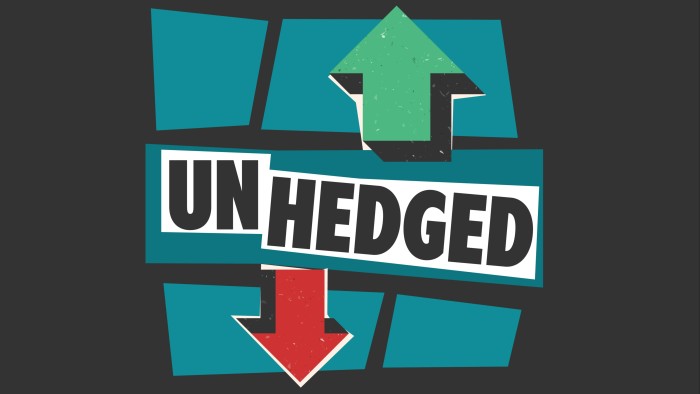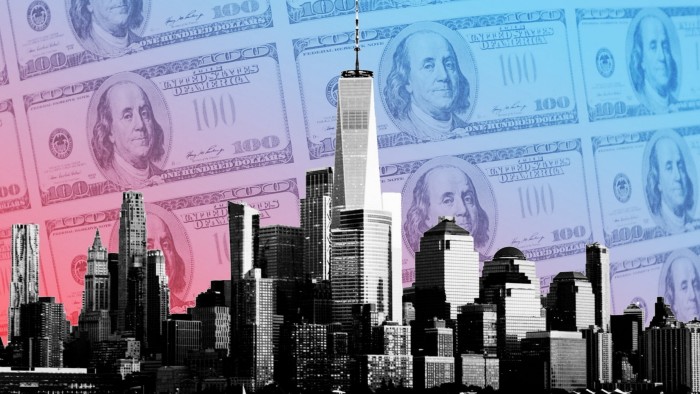This article is an on-site version of our Unhedged newsletter. Premium subscribers can sign up here to get the newsletter delivered every weekday. Standard subscribers can upgrade to Premium here, or explore all FT newsletters
Good morning. Friday’s jobs report looked fine to Unhedged — a little light on new jobs in January, but December was revised up and the unemployment rate decreased — but markets didn’t love it. Stock and bonds fell. We seem to be in more of a glass-half-empty market than we were at the end of 2024. If your glass is half full, let me know why: [email protected].
Stock markets shrug at Trump’s tariff threats
On their face, global stock markets do not appear worried about a trade war. Since the start of this year, stock markets in Mexico, China and Europe have all outperformed the S&P 500 in dollar terms, and all three have more than recovered from the shock of Trump’s (as yet unfulfilled) threat of 25 per cent tariffs on the US’s immediate neighbours and China. Canada’s market has been somewhat weaker, but it remains up on the year, notable given that US exports amount to almost a fifth of GDP.

This could mean a number of things. The market may think Trump is bluffing about imposing high tariffs, or that tariffs will not hit the profits of public companies particularly hard. Alternatively, the damage to profits may have been priced in months ago, as Trump’s odds of winning the presidency rose. What we can say for sure is that there is no evidence of a 2025 tariff shock at the index level.
At the company level, things look somewhat different. It’s not as simple as looking at international stocks with the most revenue exposure to the US and seeing how they have performed. Many of the international companies with high US revenue exposure are in services or manufacture goods in the US, avoiding the tariff issue. One has to look for tariff impact on a quite specific subset of stocks.
European auto and drinks companies fit the profile. Part of the point of products from Diageo (Guinness beer, Crown Royal whiskey, Casamigos tequila) and Pernod Ricard (Beefeater gin, Perrier-Jouët champagne) is that they are imported. And both companies cited tariff uncertainty — and poor demand — when they cut profit forecasts recently. According to Morgan Stanley, 25 per cent of Porsche’s unit sales are in the US, and the cars are 100 per cent manufactured in Europe. At BMW and Mercedes, 15 per cent of unit sales are in the US, and those units are 60 and 57 per cent internationally produced.
But it is only shares in the drinks companies, which have publicly cut profit targets, that have been hit hard this year:

Jacob Pozharny, co-CIO of Bridgeway Capital Management, offers another way to look at this. He maps global stock markets on a matrix of expert sentiment (analysts’ earnings revisions, changes in short interest, and so on) and return performance. Most markets behave predictably, with performance tracking sentiment in a linear way. But there are outliers where sentiment is strong but performance has been mediocre. Here is his matrix from October through the end of January:

It is notable that markets in China, Mexico and Hong Kong — all prime targets for tariff threats — are up and to the left of the trend line, indicating good sentiment and so-so performance. “Professionals are seeing a lot of positive things in the countries affected by tariffs but the market is not responding to that,” Pozharny says. “The experts see Trump’s discussions of tariffs as a bluff and yet the market is wary. I see that as an opportunity.”
It is hard to know the degree to which the market judged Trump to be bluffing and to what degree it thinks tariffs, if imposed, will only have a limited impact. Either way, though, markets to date are not terribly concerned. Whether they are right to be so sanguine is a separate question.
Energy prices and inflation
Treasury secretary Scott Bessent wants 10 year Treasury yields to fall, and thinks lower energy prices will play a big part in making that happen. From Bloomberg:
For working-class Americans, “the energy component for them is one of the surest indicators for long-term inflation expectations,” [Bessent] said.
“So if we can get gasoline back down, heating oil back down, then those consumers not only will be saving money, but their optimism for the future will” help them rebuild from the recent years of high inflation, Bessent said…
The bond benchmark closed at a fresh low for 2025 on Wednesday . . . “The bond market is recognising that” under Trump “energy prices will be lower and we can have non-inflationary growth,” Bessent said of the drop in yields in recent weeks. “We cut the spending, we cut the size of government we get more efficiency in government. And we’re going to go into a good interest-rate cycle.”
It is worth noting that this view is unconventional among economists. The reason that energy prices are excluded from core inflation measures is that they are volatile and poor predictors of future inflation. And the direct weighting of energy within the CPI and CPE inflation indices is less than 10 per cent. At the same time, though, energy prices are extremely visible: when people think about inflation in the US, they are often thinking about gasoline prices. What is more, there is a remarkably strong historical correlation between break-even inflation rates and energy prices. Joseph Lavorgna of SMBC Nikko Securities writes that Bessent “hits the mark” with his comments, and provides this chart of break-even inflation and the oil price:

Real interest rates are the other half of Treasury yields, as Lavorgna notes, and those are sensitive to monetary policy, growth expectations, and expected government deficits. So, “if oil prices and projected budget deficits decline, long term interest rates can fall sharply — we estimate to well below 4 per cent. And remember this would be independent of monetary policy action.”
My response to this line of thinking is that there is a third factor that affects both break-even inflation and oil prices: economic growth, particularly wages and consumer spending. Like energy prices and break-even inflation, growth and break-even inflation track each other nicely, and of course growth is a major determinant of energy prices. My suspicion is that the tight break-evens/energy correlation is in large part spurious, and that targeting energy prices in particular will not prove to be a particularly good strategy for bringing down long-term interest rates. I’m not confident about this by any means, however.
I’m very curious to hear readers’ views — please email me.
Something to note in passing. When Bessent says that the recent fall in long-term yields is the market recognising that energy prices are set to fall and bring inflation down with them, he is clearly wrong. On the contrary, break-even inflation is up. All the work in bringing yields down is being done by real rates:

Being wrong about what is happening now does not mean that he is wrong about how the energy-inflation link will evolve in the future, however. More on this topic tomorrow.
One good read
The work from home puzzle.
FT Unhedged podcast

Can’t get enough of Unhedged? Listen to our new podcast, for a 15-minute dive into the latest markets news and financial headlines, twice a week. Catch up on past editions of the newsletter here.
Recommended newsletters for you
Due Diligence — Top stories from the world of corporate finance. Sign up here
Free Lunch — Your guide to the global economic policy debate. Sign up here
https://www.ft.com/content/9c37558f-0ab6-4a2a-924a-e629ea871df5


